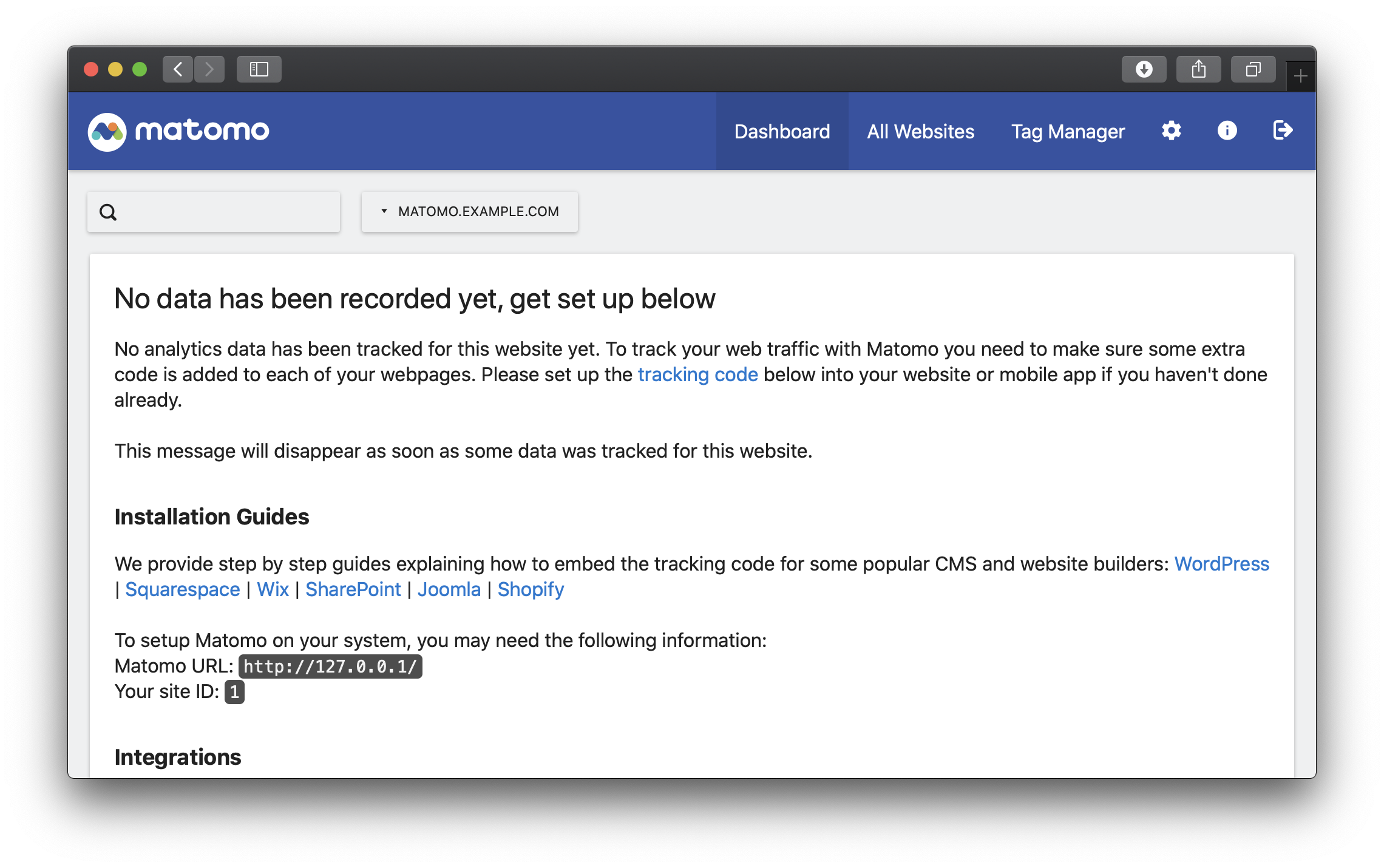Matomo§
To run the Matomo web analytics platform using Unit:
Install Unit with a PHP language module.
Install and configure Matomo’s prerequisites.
Install Matomo’s core files. Here, we install it at /path/to/app/; use a real path in your configuration.
Run the following command (as root) so Unit can access the application directory:
# chown -R unit:unit /path/to/app/
Note
The unit:unit user-group pair is available only with official packages, Docker images, and some third-party repos. Otherwise, account names may differ; run the ps aux | grep unitd command to be sure.
For further details, including permissions, see the security checklist.
Next, prepare the Matomo configuration for Unit (use real values for share and root). The default .htaccess scheme in a Matomo installation roughly translates into the following:
{ "listeners": { "*:80": { "pass": "routes" } }, "routes": [ { "match": { "uri": [ "/index.php", "/js/index.php", "/matomo.php", "/misc/cron/archive.php", "/piwik.php", "/plugins/HeatmapSessionRecording/configs.php" ] }, "action": { "pass": "applications/matomo/direct" } }, { "match": { "uri": [ "*.php", "*/.htaccess", "/config/*", "/core/*", "/lang/*", "/tmp/*" ] }, "action": { "return": 404 } }, { "match": { "uri": "~\\.(css|gif|html?|ico|jpg|js(on)?|png|svg|ttf|woff2?)$" }, "action": { "share": "/path/to/app$uri" } }, { "match": { "uri": [ "!/libs/*", "!/node_modules/*", "!/plugins/*", "!/vendor/*", "!/misc/cron/*", "!/misc/user/*" ] }, "action": { "share": "/path/to/app$uri", "fallback": { "pass": "applications/matomo/index" } } } ], "applications": { "matomo": { "type": "php", "targets": { "direct": { "root": "/path/to/app/" }, "index": { "root": "/path/to/app/", "script": "index.php" } } } } }
Upload the updated configuration. Assuming the JSON above was added to
config.json. Run the following command as root:# curl -X PUT --data-binary @config.json --unix-socket \ /path/to/control.unit.sock http://localhost/config/
Note
The control socket path may vary; run unitd -h or see Startup and Shutdown for details.
After a successful update, Matomo should be available on the listener’s IP address and port:
